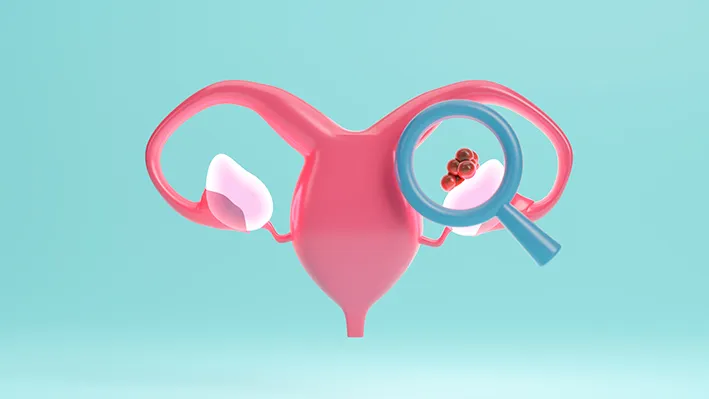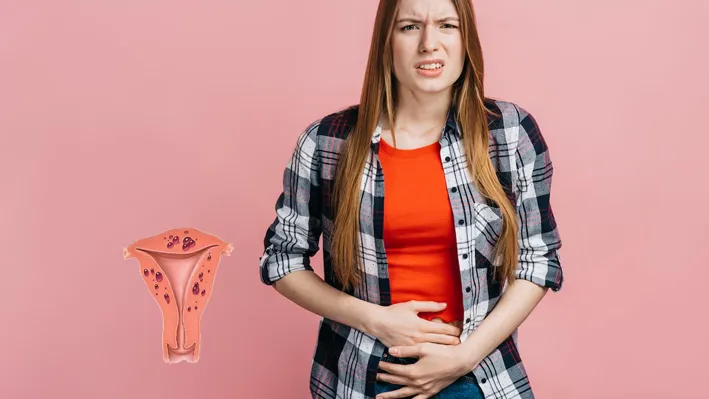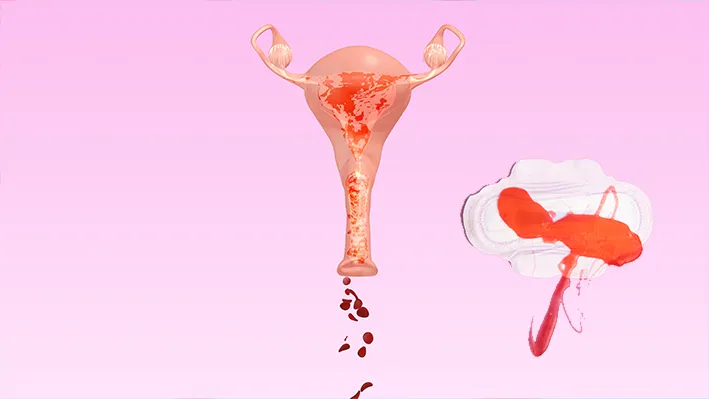
by Womanaari | Sep 6, 2024 | Uncategorized
Understanding Painful Intercourse (Dyspareunia): A Guide
Dyspareunia, or painful intercourse, is a condition that includes pain or discomfort during intercourse. This condition can have physical and psychological causes, and it’s important to learn what causes this pain and how to deal with it.
What is Dyspareunia?
Dyspareunia refers to steady or recurrent pain during intercourse. This pain can happen not long before, during, or after sex. It very well may be felt on the outer layer of the genital region or more deeply inside the pelvis. The pain might be gentle or extreme and can impact one’s quality of life.
Common Causes for Painful Intercourse
Dyspareunia might be brought about by physical and psychological factors, which might include:
Vaginal Dryness: Most often a result of hormonal changes, which happen at menopause, during lactation, and after labor, inciting contact and discomfort.
Infections: Thrush, UTIs, or sexually sent illnesses can cause bothering, which makes sex painful.
Vaginismus: Compulsory contraction of the vaginal muscles achieved by disquiet, fear, past trauma or injury.
Endometriosis: Tissue advancement outside the uterus prompts significant pelvic pain during sex.
Pelvic Inflammatory Sickness: Infection of the conceptive organs due to most STIs causes ongoing pain in intercourse.
Psychological Factors: Stress, tension, discouragement, or a history of sexual trauma may likewise introduce itself as painful intercourse.
Symptoms of Painful Intercourse
The cardinal symptom of dyspareunia is pain during or following sexual intercourse and may present as:
• Burning or stinging in the vaginal area Sharp pain during penetration.
• Aching or throbbing following intercourse.
• Extreme pain in the lower abdomen or pelvic.
Diagnosis and Treatment
The diagnosis process may involve:
• History: history taking about symptoms and previous medical history.
• Physical examination: Pelvic examination to diagnose infections or cysts or abnormalities
• Psychological check-up: If psychological factors are suspected, psychotherapy has been recommended.
Treatment depends upon the cause and may involve:
• Lubricants: Decreases friction in cases of vaginal dryness.
• Medication treating infections-antibiotics or antifungals.
• Pelvic floor therapy: These are techniques for relaxing pelvic muscles that can help reduce pain.
• Counseling: Therapies that may help resolve psychological issues that may be causing the pain.
• Medications to treat hormonal imbalance: Most commonly, topical estrogen or systemic hormone replacement.
• Surgery: Surgery is sometimes required to relieve conditions such as endometriosis.
Managing Painful Intercourse
The following are ways of coping with painful intercourse:
• Communicate with your partner about your pain.
• Longer foreplay can help improve the amount of natural lubrication.
• Remember you can always reach out to healthcare providers.
Conclusion
Discomfort during sexual intercourse often casts a dark spell over the overall physical and mental health of the individuals going through it. However, it can be resolved with proper diagnosis and effective treatment. Seek immediate consultation with a healthcare provider if you face any issues.

by Womanaari | Sep 6, 2024 | Uncategorized
Understanding Ovarian Cancer: A Simple Guide
Ovarian cancer is a troublesome condition that impacts the ovaries, the conceptive organs obligated for making eggs in women. Ovarian cancer is a condition that includes the ovaries and is not distinguishable in its beginning phases among ladies. Understanding the effects, risk variables, and treatment decisions for ovarian cancer can help you with advancing toward right on time identification and convincing organization.
What is Ovarian Cancer?
In ovarian cancer, the cells in the ovaries increase quickly, producing a tumor. On the off chance that the growth isn’t dealt with immediately, it can spread to different region of the body. Ovarian cancer is assembled into three types: epithelial ovarian cancer, which begins in the cells on the ovary’s external layer, germ cell growths, what start in the cells that produce eggs, and stromal growths, which structure in the ovarian tissue responsible for chemical flow.
Causes and Hazard Variables
Albeit the exact reason for ovarian cancer is obscure, there are a few realized risk factors for this cancer, including:
• Most ovarian growths occur in women beyond 50 years old, particularly after menopause.
• Family background of ovarian, breast, or colorectal cancer might increase risk.
• Lynch syndrome is one of numerous genetic conditions among women.
• It is noticed that ladies who have never become pregnant have a slight expanded chance of being impacted by ovarian cancer. Then again, the risk of this infection can be reduced by getting pregnant, having breastfed the baby, or in any event, using oral contraceptives.
• Hormone Replacement Therapy taken for longer term can bring risks of ovarian cancer as well.
Symptoms of Ovarian Cancer
Ovarian cancer typically shows minimal symptoms or nondescript symptoms until it spreads to other parts of the body. Early signs and symptoms associated with ovarian cancer include :
• Abdominal Bloating or Swelling
• Pelvic Pain
• Difficulty Eating or Feeling Full Quickly
• Frequent Urination
• Fatigue and Weight Loss
Diagnosis of Ovarian Cancer
The following tests are generally used for diagnosis:
• Pelvic Exam
• Imaging Tests
• Blood Tests
• Biopsy
Early diagnosis is very crucial as the results of treatment are more favorable.
Stages of Treatment of Ovarian Cancer
The treatment procedure changes based on the individual’s condition and the state of the tumor. Some of the treatment methods are:
• Surgery: Surgical intervention is the most frequently applied first treatment, including removal of ovaries, fallopian tubes, and the uterus with or without additional surrounding tissues.
• Chemotherapy: The administration of anticancer drugs to kill the cancerous cells or to inhibit their growth and replication is generally started after surgical interventions when a microscopic residual may remain.
• Targeted Therapy: The treatment is focused on the attack of certain critical vulnerabilities of the cancerous cells, mainly in the cases of genetic mutations, such as BRCA1 and BRCA2. The approach of this kind of treatment is very different from the general chemotherapy.
• Radiation Therapy: Though it is rarely used in the case of ovarian cancer, radiation may be used targeting a certain area in some instances.
Prevention and Early Detection
Though complete prevention of this disease is impossible, some of the following methods reduce the risk:
• Regular Check-ups: The regular visit to the hospitals for check-ups and discussing the symptoms with a doctor might help in early-stage detection.
• Genetic Counselling: Those women who have a family medical history regarding ovarian or related cancers may be suggested genetic counselling and” testing for BRCA1 and BRCA2 and other gene mutations.
• Healthy Lifestyle: Maintaining correct weight, having proper nutritious food, and not taking hormone replacement therapy for a very long period might prevent the risk.
Conclusion
Although ovarian cancer is a serious disease, it is also much easier to deal with when the symptoms, risk factors, and treatment are well known. Therefore, early detection and maintenance form the most integral part of improved quality of life. If suspicion arises, consultation with the healthcare provider could help further evaluation and advice.

by Womanaari | Sep 6, 2024 | Uncategorized
Understanding Adenomyosis: A Simple Guide
Adenomyosis is when the endometrium increases into the uterine solid wall. Most instances of this condition impact ladies in their 30s and 40s with kids. This unusual development can prompt the expansion of the uterus and discomfort. Realizing the current treatments for this helps in counteracting and identifying the condition at the beginning phase and subsequently improves its reparability.
What is Adenomyosis?
Adenomyosis happens when endometrial tissue, which normally lines within the uterus, starts to penetrate the solid mass of the uterus. This can make the uterine walls thicken, and the uterus grow. Adenomyosis isn’t cancerous, even though it can cause huge pain and enduring, particularly during menstrual cycle.
Causes of Adenomyosis
Several factors may contribute to its development:
• Hormonal Factors: Hormones like estrogen, progesterone, prolactin, and follicle-stimulating chemicals (FSH) may assume a part in improving adenomyosis. The condition frequently improves after menopause when chemical levels decrease.
• Invasive Growth: Some theories suggest that adenomyosis might create because of the immediate invasion of endometrial cells into the uterine muscle, possibly as a result of uterine surgery, such as a cesarean section, or after labor.
• Uterine Inflammation: Inflammation of the uterine covering during postpartum recuperation might cause a break in the typical limit of cells that line the uterus, prompting adenomyosis.
• Genetics: There might be a hereditary part, as adenomyosis sometimes runs in families, though more research is expected to confirm this.
Symptoms of Adenomyosis
The following are the symptoms of adenomyosis can vary from mild to severe:
• Heavy bleeding during menstrua
• Severe Menstrual Cramps
• Chronic Pelvic Pain
• Enlarged Uterus
• Pain During Intercourse
Diagnosis
A careful clinical history, physical assessment, and imaging tests are utilized to analyze adenomyosis. These tests could include:
• Ultrasound
• MRI
• Endometrial Biopsy
Treatment Options for Adenomyosis
The level of the patient’s symptoms, age, overall health, and desire to procreate all influence the standard course of treatment for adenomyosis.
• Pain Relief: Some pain killers can help reduce menstrual flow and pain.
• Hormonal Therapies: Anti-origination drug pills, hormonal IUDs, or other synthetic therapies can help oversee or decrease menstrual bleeding and ease pain.
• Endometrial Ablation: This technique is suggested for women who do not wish to have children late as it destroys the covering of the uterus to decrease profound menstrual bleeding.
• Uterine Artery Embolization (UAE): UAE is a surgical procedure that cuts off blood flow to the affected uterine area.
• Hysterectomy: When other treatments are insufficient for a serious condition, a hysterectomy (uterine departure) may be advised. This is considered as a definite for adenomyosis.
Living with Adenomyosis
The following are coping mechanisms to live with adenomyosis:
• Regular Exercise: There are many ways to decrease pain by taking part in physical activity along with improvement in the general health of the body
• Healthy Diet: Eating a proper and correct balance diet full of soothing foods is supportive to handle the symptom.
• Stress Management: Yoga, meditation, or counselling can help as stress-relieving agents about stress caused due to adenomyosis.
Conclusion
Adenomyosis is a condition that can cause discomfort and affect day-to-day life. However, with proper treatment plans, many can track down help for their symptoms. Early mediation can assist with overseeing symptoms and work to improve your quality of life.

by Womanaari | Sep 6, 2024 | Uncategorized
Grasping Menstrual Problems: A Simple Aide
Menstrual problems are a typical issue faced by numerous ladies, and they can change widely concerning side effects and seriousness. From unpredictable periods to agonizing cramps and heavy bleeding, understanding these issues is important for overseeing them successfully. This guide will explore the most widely recognized menstrual issues, their causes, and potential treatment choices, utilizing basic language that everybody can comprehend.
Common Menstrual Issues
1. Irregular Periods: Unpredictable periods allude to cycles that are shorter or longer than the regular 28-day cycle. It can happen because of stress, drastic weight reduction or gain, excessive exercise, and hormonal imbalances.
2. Heavy Menstrual Bleeding: Heavy periods are bleeding longer than seven days. It can be brought about by conditions like uterine fibroids, hormonal imbalance, or issues with blood clotting.
3. Painful Periods: Menstrual cramps are the most common menstrual issue. They are caused by uterine constrictions and can go from gentle to extreme. For certain ladies, the pain is manageable with over-the-counter pain killers, while for other people, it very well may cripple.
4. Missing Periods: This is the absence of a monthly cycle and happens in two situations:
• when a girl does not get her first period by the age of 16.
• when a lady who has had regular periods unexpectedly quits menstruating for a few months.
Its reasons can incorporate pregnancy, critical weight changes, excessive exercise, stress, and ailments like PCOS or thyroid issues.
5. Premenstrual Syndrome: PMS is a compiled side effects that happen before a lady’s period. These side effects can incorporate mood swings, bloating, headaches, and breast tenderness.
Reasons for Menstrual Issues
Menstrual issues are majorly related with hormonal imbalance. Disturbance in estrogen and progesterone hormone play an important part in managing the menstrual cycle. Normal causes include:
• Hormonal Imbalances: Conditions like PCOS or thyroid issues can disturb chemical levels, prompting sporadic or missing periods.
• Stress: Constant pressure influences the body’s hormone creation, possibly prompting unpredictable cycles or skipped periods.
• Weight Changes: Both critical weight reduction and gain can affect menstrual cycles, especially in instances of dietary issues or overweight.
• Ailments: Uterine fibroids, endometriosis, and pelvic inflammatory disease are normal ailments that can cause agonizing or weighty periods.
Treatment Choices
Here are a few normal methodologies:
• Way of life Changes: For issues connected with stress, weight, or exercise, lifestyle changes can be valuable. This could incorporate decreasing stress through relaxing methods, keeping a healthy weight, and guaranteeing regular, moderate activity.
• Medicine: Hormonal medicines, for example can manage periods and lessen weighty bleeding. Over-the-counter pain killers can assist with overseeing cramps.
• Surgical Choices: In situations where menstrual issues are brought by conditions like fibroids or endometriosis, medical procedure might be important to eliminate the risky tissue.
• Natural Cures: A few ladies find help from menstrual side effects through regular cures like natural teas, needle therapy, or dietary changes. In any case, it is fundamental to talk with a medical care supplier prior to attempting these choices.
When to See a Specialist
While infrequent menstrual inconsistencies are normal, persistent or extreme side effects ought to be assessed by a medical services supplier. Signs that warrant clinical consideration include:
• Periods that are reliably sporadic or missing.
• Menstruation that is unreasonably weighty or endures longer than seven days.
• Serious menstrual agony that obstructs day to day existence.
• Side effects of PMS or PMDD that are extreme and incapacitating. Early finding and treatment of menstrual issues can assist with forestalling more serious medical problems down the line and work on your general personal satisfaction.
Conclusion
Menstrual issues are a typical issue that numerous ladies face eventually in their lives. Grasping the various kinds of issues, their causes, and treatment choices can assist you with assuming command over your menstrual wellbeing. In the event that you experience any extreme or continues side effects, make sure to out to a medical care supplier for direction and backing. Making proactive strides can have a massive effect in dealing with your menstrual wellbeing successfully.

by Womanaari | Sep 6, 2024 | Uncategorized
Understanding Heavy Menstrual Bleeding (Menorrhagia): A Manual Aide
Heavy menstrual bleeding, medically known as menorrhagia, is a typical condition that various women experience sometime in their lives. Characterized by abnormally heavy or delayed periods can upset day to day existence and lead to other medical problems, like anaemia. This guide means to assist you with grasping the causes, side effects, and treatment choices for heavy menstrual bleeding in a direct way.
What is Menorrhagia?
Menorrhagia implies menstrual bleeding that is incredibly heavy or endures longer than seven days. It is important to understand that “heavy” can differ person to person but includes:
• Required to change sanitary things (pads, tampons, etc) every hour or even more intermittently for a couple of hours in a row.
• Encountering menstrual stream that incorporates enormous blood clumps.
• Having periods that last longer than seven days.
• Expecting to utilize double sanitary protection to oversee menstrual stream.
Heavy periods can be both physically and mentally tiring, influencing your ability to do ordinary exercises and prompting a critical effect on your personal satisfaction.
Reasons for Heavy Menstrual Bleeding
Here are a few normal causes:
1. Hormonal Imbalances: Chemicals like estrogen and progesterone direct the development of the uterine covering, which sheds during monthly cycle. Disturbance in these chemicals can make the coating become excessively thick, bringing about heavy bleeding when it is shed.
2. Uterine Fibroids: These harmless growths in the uterus can cause heavier and prolonged menstrual bleeding, especially in ladies during their 30s and 40s.
3. Polyps: Minute growths on the covering of the uterus can prompt heavy periods. These are generally harmless yet can add to extreme bleeding.
4. Adenomyosis: This happens when the tissue that usually lines the uterus starts to develop into the solid mass of the uterus. This can bring about difficult and heavy menstrual periods.
5. Bleeding Problems: Certain bleeding issues can cause unusual or unnecessary menstrual bleeding.
6. Medicines: Certain prescriptions, like anticoagulants, can add to heavier menstrual bleeding. Continuously inform your medical care supplier about any meds you are taking.
7. Intrauterine Device: A few sorts of IUDs can cause heavier periods as a side effect.
Side effects
The essential side effect of menorrhagia is heavy menstrual bleeding, however it can likewise cause different side effects, including:
• Tiredness and Weakness: Because of the loss of a lot of blood, a few ladies might foster anaemia, prompting side effects like exhaustion, shortcoming, and shortness of breath.
• Extreme Cramps: Alongside heavy bleeding, numerous ladies experience agonizing menstrual spasms.
• Social Interruption: Heavy periods can slow down your everyday exercises, making you miss work, school, or get-togethers.
Analysis and Treatment
If you think you have menorrhagia, it is vital to talk with a doctor for a proper conclusion. The analysis normally includes:
• Clinical History and Physical Test
• Blood Tests
• Ultrasound
• Endometrial Biopsy
When analyzed, the treatment for menorrhagia relies upon its objective and seriousness. Normal medicines include:
• Hormonal Medicines like birth control pills, or hormonal IUDs.
• Non-Hormonal Medicines like Non-steroidal anti-inflammatory drugs.
• Increase in iron, if anaemic.
Surgical Choices in additional extreme cases, like endometrial removal (evacuation of the uterine covering) or myomectomy (expulsion of fibroids) might be essential.
Overseeing Heavy Menstrual Bleeding
Living with heavy periods can be testing, however there are ways of dealing with the condition and decrease its effect on your life. Here are a few hints:
• Keep a Menstrual Journal
• Utilize the Right Sanitary Items
• Rest and Hydrate
When to See a Specialist
Assuming that you’re encountering heavy menstrual bleeding that is influencing your personal satisfaction, seeing a medical care provider is significant. Early finding and treatment can assist with forestalling entanglements and work on your general wellbeing and prosperity.
By figuring out menorrhagia and its causes, side effects, and medicines, you can find proactive ways to successfully deal with this condition. If you are concerned about your menstrual wellbeing, make sure to out to a medical services supplier for direction and support.




